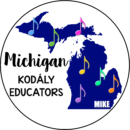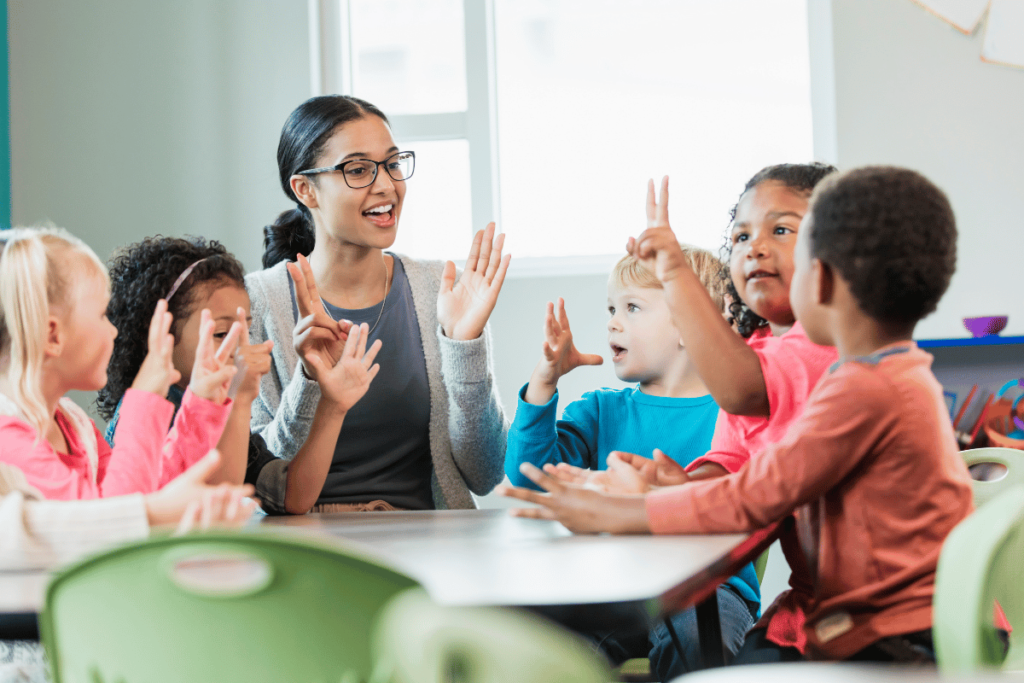In my 14 years of teaching music to elementary students, one of my biggest challenges has been really getting to know them.
It’s tough when we only have a short time together each week. I’ve often wished I could connect with them like their classroom teachers do.
But I don’t want to just accept this struggle—I want to do better!
So, I’ve been thinking about what has worked for me in the past to build those connections, both during music class and outside of it.
Here are my top five favorite strategies so far.
1. Before and After School Greetings
At my school, we have a rule: we must be in the hallway to greet students when they arrive and say goodbye to them at the end of the day. It’s not just about being polite; it’s also for safety reasons.
I’ve been following this routine for years, and I’ve found it’s one of the best ways for an elementary music teacher like me to get to know students better. I stand in the hallway when they arrive and when they leave. I take a moment to say hello, connect with them on something, and let them know I’m happy to see them.
It’s amazing how much of a difference this simple gesture can make. Many kids who start the day feeling grumpy or tired light up when greeted warmly:
“Hey there! Good morning! I love your Star Wars shirt. And I’m so glad you’re here!”
Some students might even stop to chat for a moment, which helps build a stronger connection between us.
2. Embrace Classroom Distractions
I’m sure you’ve all experienced situations where your lesson is going smoothly, and then a distraction pops up. I’m not talking about behavior issues, but rather when a student wants to share a personal story related to the material we’re covering.
I know time is limited, but I firmly believe in the “embrace the distraction” approach to teaching. If a student or I have a personal connection or an out-of-the-box thought, why not let it be shared and discussed? It’s a great opportunity for students to get to know me better or for me to learn more about them in the context of our classroom.
For instance, one day we somehow ended up talking about space (which happens to be a hobby of mine). I decided to spend a minute discussing it with them. Now, many students feel comfortable approaching me to talk about the subject. This has helped them see that there’s a teacher who shares their interests and with whom they can connect.
3. Student-Driven Songs
There are plenty of chances for students to get personally involved by giving them some freedom of choice. For instance, take the song “Let Us Chase The Squirrel.” It goes like this:
“Let us chase the squirrel
Up the hickory, down the hickory
Let us chase the squirrel
Up the hickory tree.”
Here’s where students can make a change. Instead of hickory, they can pick their favorite type of tree or fruit. Start by asking for their ideas. This can spark some interesting conversations. For example, if someone says “apple,” ask them why they like apples or what their favorite apple dessert is. If they choose “maple tree,” ask why that’s their favorite.
This is similar to the idea of embracing distractions, but it’s about letting students have a say in the songs you’re already using.
4. Optimize Free Time or Reward Days
I implement a point system to manage long-term behavior in my classes. Each time I see a class, they can earn up to five points. Once they reach a certain total, they earn a “reward day.”
On a reward day, we typically have half of our usual music class (ensuring we cover important concepts), followed by half free choice or movie time. Many other teachers use a similar approach.
During this relaxed time, it’s tempting to sit back and let the kids enjoy themselves—which is perfectly fine. However, it’s also a great opportunity to engage in quick conversations with students one-on-one.
Approach those who are drawing and discuss their artwork. Strike up a chat with those watching the movie and learn about their favorite films. You’ll be surprised how eager kids are to share about themselves and their interests!
5. Student-Selected Folk Dances
This tip is simple to follow and can make a big difference without taking away any time from our music lessons. Many of us teach folk dances, and most of them are set to recorded music. But if we pause to think about it, what do most of these music pieces have in common?
- Duple meter.
- Phrases in 8 or 16 beats.
- Contrasting sections.
- Moderate to fast tempo.
At the beginning of the school year, I ask students to share their favorite music with me through a survey. Periodically, I take the most popular songs and incorporate them into our folk dance routines.
While it might not always work as seamlessly as using traditional music, it helps strengthen the connection between students and their learning. It also shows them that their preferences matter to me.
BONUS! It keeps me updated on the current music trends among the kids (which, wow, might make me sound a bit old, huh?).
Kids Learn Better When They Trust You
When you have a stronger connection with your students, they’ll be more willing to take musical risks and grow. These straightforward tips have been incredibly helpful for me, and I’m confident they’ll keep benefiting me in the future.
I’m always eager to learn more, which is why I enjoy attending workshops and learning from fellow music teachers. You can find more information about upcoming sessions and what you can expect to see on our workshops page.
Thanks for reading, and best of luck with your musical endeavors!
Zachery VanderGraaff is the current President of the Michigan Kodaly Educators and teaches Young Fives through Fourth Grade music in Frankenmuth, MI. Learn more about him at the Dynamic Music Room.

